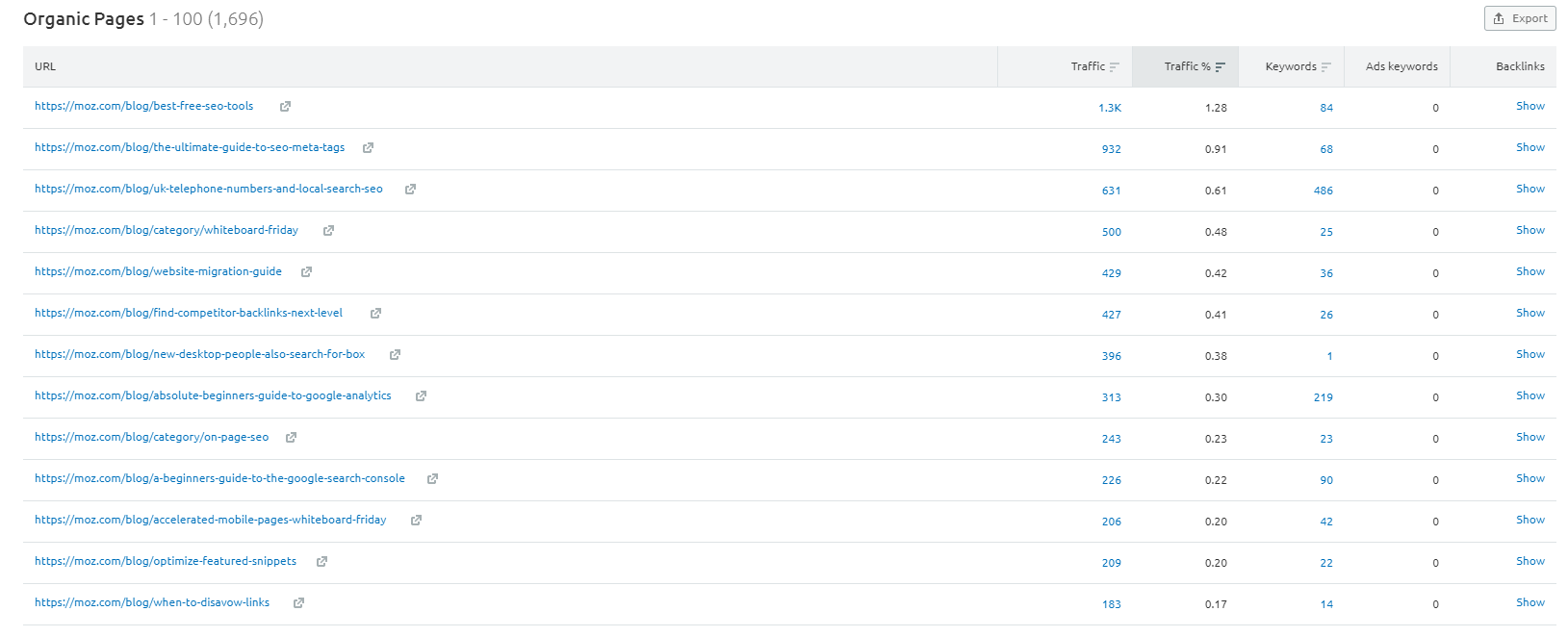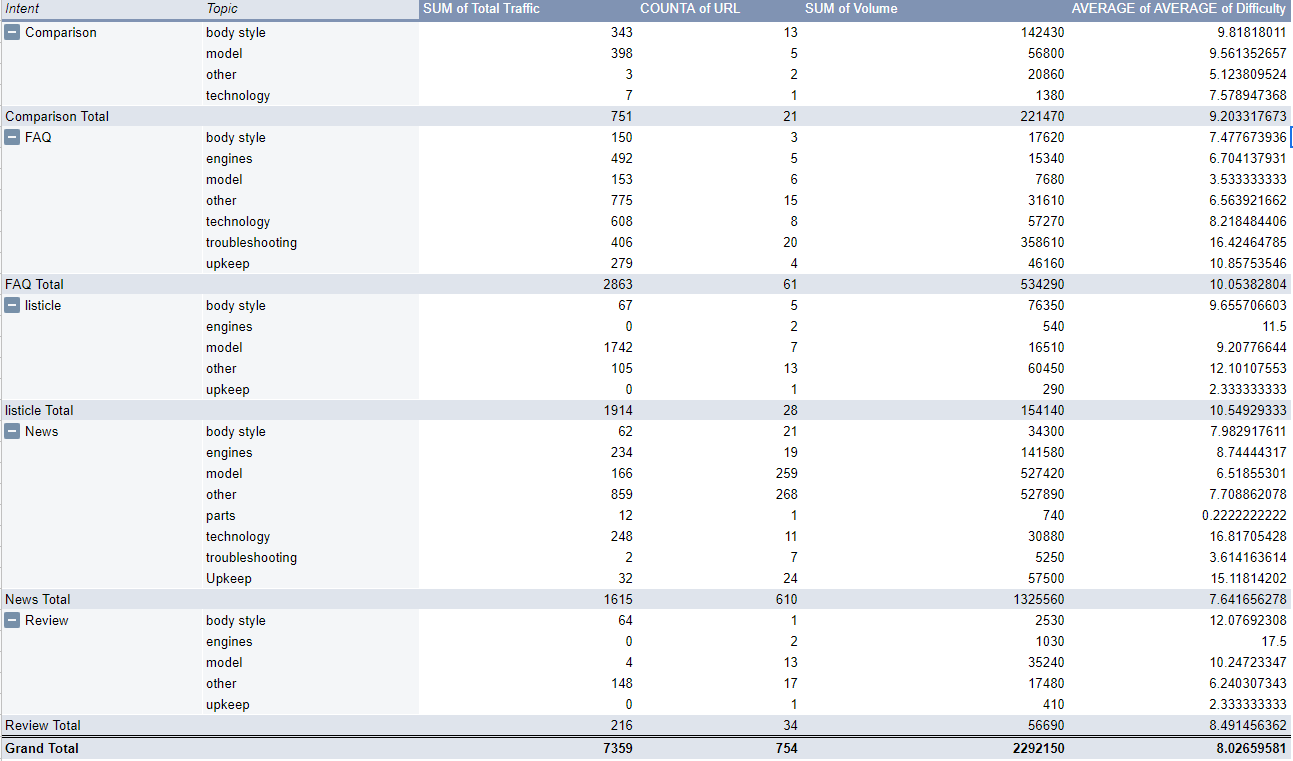An effective blog strategy is a key strategic tool in the growth of your website. It is fundamental to driving engagement with your target audience, answering questions they have, and educating them on relevant topics. But that isn’t the only benefit.
If you do all of the above and nail your content strategy, then it leads to more organic visibility, more traffic, and more leads.
Which is only a good thing.
So how do you build an effective blog strategy? And where do you start?
Well for us, the starting point is always auditing your competitor’s blog.
And using this guide we’ll show you how you can;
- Identify your competitors.
- Spot how they are gaining market share
- Learn where they are falling short
- Identify where the opportunities are for your website
- Provide a benchmark against which you can measure your growth
- Use all of this to inform your new blog strategy
Determine your blog’s purpose
Before you get started, it is important to understand what you want your blog to achieve. You don’t want to be aimlessly writing content to ensure that the blog section of your site is up to date.
It has to have a goal.
Different blog posts can achieve different goals. The most common purposes of a blog post can be;
- Traffic acquisition
- Promoting a product
- Lead generation
- Thought leadership
- Guides to help readers achieve something
Determining the purpose of the blog will guide what topics you write about, the keywords that you target, and the structure of the post.
Identify your core blog topics
Once you’ve defined the purpose of the blog, it is important to then decide on the core topics.
You can use the purpose of the blog, and whatever industry the business is in, to create a topic plan. Think about topics that are relevant to your business and that you have expertise on. The more that you can show expertise on a particular topic, the more the reader will trust your opinion and guidance on the topic.
From the core topics, you then break it down into subtopics that are related – or topic cluster pages.
For example, a core topic might be ‘Content Marketing’, and the cluster pages can be supporting materials such as ‘types of content marketing’, ‘tools for content marketers, and ‘copywriting tips for content marketers.
Identifying your core blog topics, as well as the supporting topic clusters, helps structure the blog and makes it easier to generate content ideas. Here we can also utilize strong internal linking with your desired keyword in the anchor text to strengthen the blog further.
Step by step guide to analyzing your competitor’s blog
Now that you’ve got an idea of what the blog’s goals and the core topics are – you can start to take a look at how the competition is executing its strategy.
To do this we split the process into 3 key steps.
Step 1: Identify who your competitors are.
The first step of any competitor analysis is understanding just who your competitors are. You’ll most likely already have some idea of who your main competitors are, but it is always important to assess from a variety of angles.
Types of Competitors
Direct Competitors – This is the type of competitor that most people are aware of. They are most likely people within your same industry or geographical location that offer a similar service or product to you. This, unfortunately, means that you will be trying to target the same audience i.e. if you are a car dealership, your direct competitors would be other dealerships within your area as well as larger entities such as AutoTrader.
Indirect Competitors – These competitors are those who are offering the same, or similar type of product or service to you, but are targeting a different audience or serve a different function within the industry. So once again if we use a car dealership as an example, an indirect competitor would be companies that offer car services such as Kwik Fit.
Tertiary Competitors – The final type of competitor is known as a tertiary competitor. These are businesses that offer services or products that are to some extent linked to your industry or business but offer little competition. Whilst you may think that these types of competitors offer no real value, it is still worth identifying them as they can be beneficial when trying to generate new content ideas.
How To Identify Competitors In Organic Search
Use Google and other Search Engines
If you’re unsure of who your direct competitors are then using Google, or the other search engine of your choice, is a perfect starting point. There are several different ways in which you can generate a list of competitors to start auditing for content ideas.
The first method is to simply search your company name, in some instances, Google will showcase a ‘people also search for’ list. This is a great start when trying to discover your main direct competitors.
The second process is to search terms related to your business & analyzing the other results that rank well for those terms. If you sell jewelry in London, simply search “Jewellers London” & Google will produce a list of competitors that you can audit.
Using Forums & social media
Another great way to identify competitors that may not be as obvious is to monitor forums & social media. The likes of Twitter & Reddit can be goldmines when trying to gather information. By using the search functions on these platforms, you can discover conversations from customers or professionals around your industry or service. This method will inevitably lead to the discovery of competitors & can also be a great way to discover content ideas.
Using SEO Tools for Competitor Analysis
Although identifying competitors can be done in a variety of ways, one of the easiest methods is to use a tool that does a majority of the work for you. There are countless options, but the one we tend to use is SEMRush.
By entering a URL into the search bar it shows you:
- Main competitors by shared keywords
- Your competitors top performing keywords
- What volume of traffic is received from organic and paid search
- Any changes in search volume the past two years
- Dofollow and Nofollow backlinks
You can use SEMrush for free, but it will only show you 5 results for each metric. If you can afford it we would recommend signing up for their pro membership allowing you the full use of the features.
Step 2: Gathering & Analysing Competitor Blog Content
Now that you have a list of your competitors, your next step is to create a detailed list of their top-performing blog content.
Collect all ranking blog posts
The way we would typically go about this is to pull all the pages from SEMrush.
All you need to do is to:
- Plugin the URL at the top
- Go to organic research
- Click on the pages tab
- Apply a filter so you only have pages that are from their blog

Export Data To A Google Sheet
Once you have gathered enough data around your competitor’s blog posts it’s time to start collating it into one big old spreadsheet. To do this we export multiple competitors’ blog posts and pull them together in one Google Sheet.
Once we’ve done that we’ve got a nice market overview with lots of rich data like:
- URL
- Keyword
- Search volume
- Difficulty
- CPC
Classify the data using RegEx
Once you have collated all of the information, you can then start to split the content into groups to help identify the types of blog posts as well as any topics that perform particularly well.
We do this by using a RegEx formula within Google Sheets.
RegEx, or regular expressions, are used to detect patterns in sequences of characters in strings. We most often do this by looking for patterns within the blog posts’ URLs. For example, if you are looking to identify how many blog posts in your lists are comparison posts just look for common words such as “vs”, “which”, or “best”.
=if(REGEXMATCH(G6,”review|test”),”Review”,if(REGEXMATCH(G6,”best|top”),”Listicle”,if(REGEXMATCH(G6,”versus|vs”),”Comparison”,if(REGEXMATCH(G6,”how|what|why|where”),”FAQ”,if(REGEXMATCH(G6,”video”),”Video”,”News”)))))
The formula works on nested if statements.
So if you look at the above formula it has the following logic:
IF the URL IN G6 Matches review OR test THEN return Review ELSE IF the URL IN G6 MATCHES best OR top THEN return Listicle
And it keeps working through that logic until the last statement where if it doesn’t match anything it returns “News”.
This massively speeds up the classification of the pages and we use it to do everything from finding the type of post, the intent to the topic.
All we do is swap out what it is looking for.
Create Pivot Tables for a Complete View
Once we have put our competitors’ posts into groups, our next step is to gain a better overall understanding of what the market is doing.
We do this by splitting the content out into a pivot table within our Google Sheet.
We often break the columns down to show the sum of total traffic, URLs (number of posts), overall search volume & average difficulty.
For the rows, we normally break these down into Blog type & Topic.
By doing this we can view overall which blog type & topic has received the most traffic, how many posts were created, the search volume around that area & also the average difficulty around that topic.

Step 3: Turn Analysis into Action
Now that you have identified the key areas that your competitors are focusing on as well as the types of content & topics that perform well, your next step is to use that information to help inform your content strategy.
Spot Potential Opportunities
When analyzing the data within the pivot table you may be able to spot several potential opportunities that your competitors may have missed that you can take advantage of. You may find that the top-performing topic has a lower amount of posts created around it than others.
This shows that there is a potential opportunity around that topic & if you were to create a good quantity of blog posts in that area you could increase your topical authority & outrank your competitors.
Analyze Potential Threats
Similarly to the above point, you can also use the research to identify if there is a particular area in which your competitors are starting to dominate that could become potential issues for your company.
This would include an indirect or tertiary competitor creating a vast amount of top-performing content around your area of business. If this is the case then you may want to target content production within that area.
Develop & Define your Content Strategy
The last action you can take after completing the above steps is to use the research carried out on your competitors to help develop and define your content strategy. You should use a combination of your business goals, potential opportunities & top-performing competitor content.
Using this data, you can start to create a content plan around specific topics to help you become an authority in that area & focus on a topic that you know has worked well for your competition. Try to remember that going head-to-head with competition is not always the best approach & often it is best to identify potential gaps within that area that your competition has missed that you can add value.
By analyzing the data & insights you’ve gained on your competition you are bound to find a wealth of potential content ideas & opportunities that you can cover.
In Conclusion
Creating effective blog content is always going to be valuable to you and your target audience. It is a strategy that we can use to support the ranking of key pages on the site, target longtail keywords, and help grow our backlink profile. The blog section provides top-funnel value, helps promote brand awareness to your target audience. More people will be familiar with your site, trust it and ultimately visit or purchase further down the line.
Use this guide to determine exactly what your competitors are doing well and how you can implement tactics to drive traffic and value to your blog.

